There are certain trees that just seem to have soul. Conifers in particular, with their unique and unusual shapes and time-tested strength, seem to have personalities just as strong as their human counterparts. This is why I am drawn to them. Enter the blue atlas cedar (
Cedrus atlantica ‘Glauca’).
Blue atlas cedar was my first love among conifers. I grow multiple forms of them: Some are stately and strong, proudly reaching to the sky in a very grand way; some are contorted and weeping, speaking to me on a philosophical level and reminding me of people I have known; others are prostrate, but all are wonderful and worth knowing. Let’s take a look.
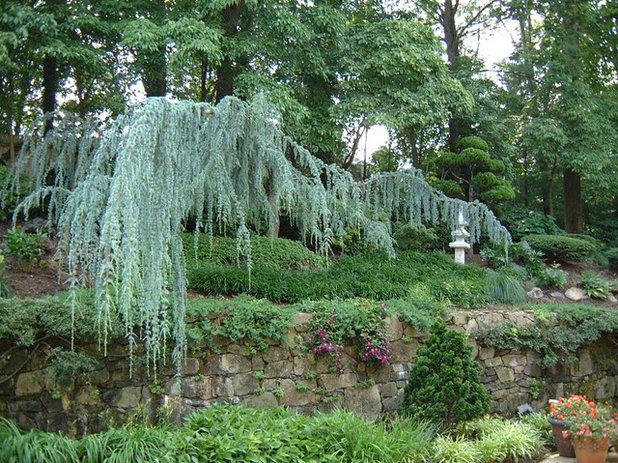
Lee's Oriental Landscape Art
Botanical name: Cedrus atlantica ‘Glauca’
Common name: Blue atlas cedar
Origin: The Atlas Mountains of Morocco and Algeria
Where it will grow: Hardy to -10 degrees Fahrenheit (USDA zones 6 to 9; find your zone)
Water requirement: Average
Light requirement: Full sun is preferred.
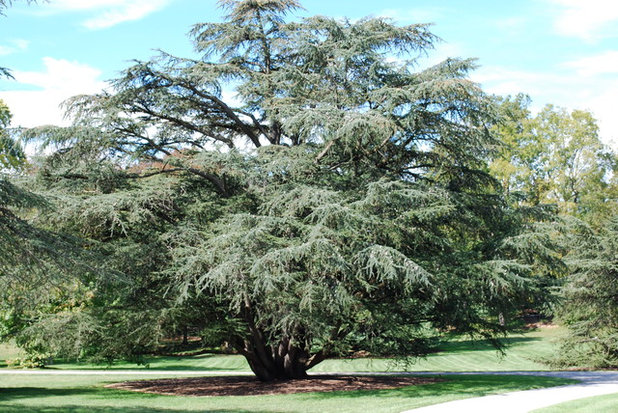
Jay Sifford Garden Design
Mature size: The straight species can attain a size of 60 feet tall and 40 feet wide; however, commonly available cultivars grow to a more manageable size of 15 feet or less.
Benefits and tolerances: Drought tolerant once established; deer, insect and disease resistant
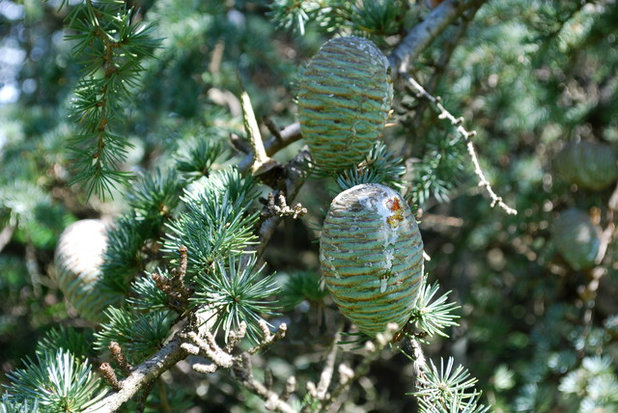
Jay Sifford Garden Design
Seasonal interest: Spectacular powder-blue new growth appears in spring; upright blue cones appear in late spring through summer on older trees; by winter the foliage takes on a blue-gray tone that contrasts beautifully with snow.
When to plant: Fall to early spring
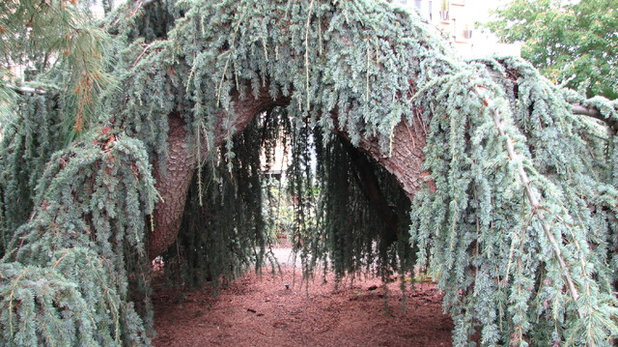
High Tech Turf & Trees
Distinguishing traits. It resembles the form of deodar cedar (
Cedrus deodara, zones 7 to 11) but with a more open, sculptural shape and a distinctive blue cast to the foliage. True cedars should not be confused with American cedars, which are actually junipers.
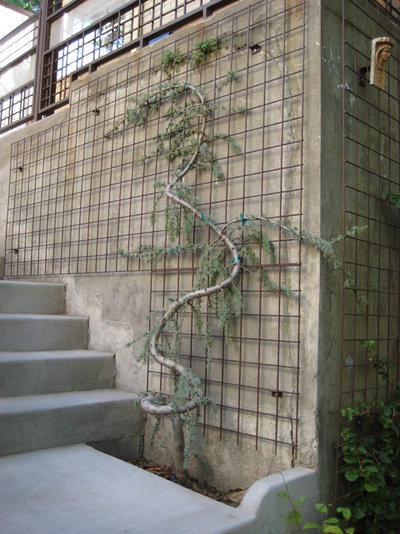
TERRABELLA, inc.
Several different forms and cultivars are available through specialty nurseries, with the weeping form being the most common. Weeping blue atlas is smaller than the type species but can still become fairly large over many years. It does, however, respond well to training and pruning.
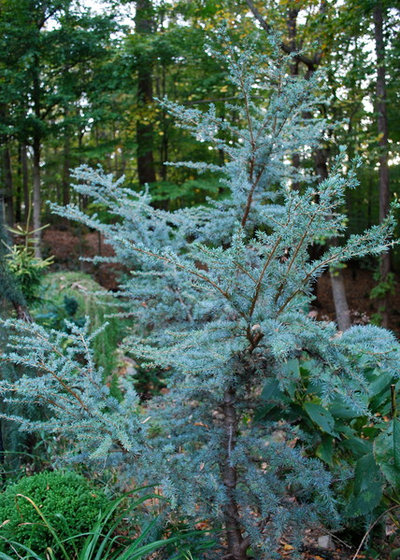
Jay Sifford Garden Design
The ‘Horstmann’ cultivar is a smaller upright tree. It is fastigiate, which means that it can develop multiple leaders. The fact that it rarely reaches a height of 15 feet makes it a perfect candidate for smaller gardens.
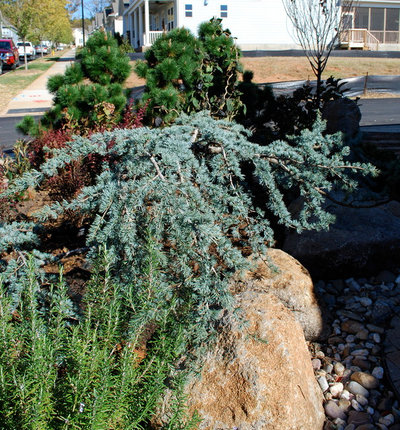
Jay Sifford Garden Design
The ‘Blue Cascade’ cultivar is more difficult to find but is prized by collectors for its growth habit. It has a semiprostrate form and is generally staked to an established height from which is spreads erratically, with each specimen taking on its own unique character. The specimen shown here is currently 3 feet tall, with a spread of 8 feet.
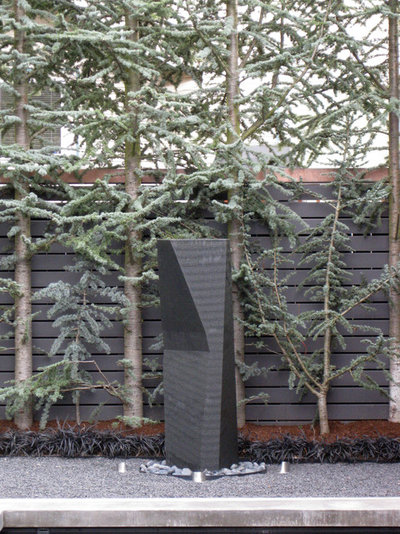
Berger Partnership
How to use it. With blue atlas cedar’s multiple forms, there are a plethora of garden uses for it. The type species makes a spectacular specimen all by itself. When purchasing and siting this form, keep in mind its large growth habit and site it away from buildings where it can develop its full character without adverse consequences.
Smaller upright forms, such as ‘Horstmann’, are useful when a unique tree is desired for a small space, such as a courtyard. They are also beautiful planted in groups, as shown here.
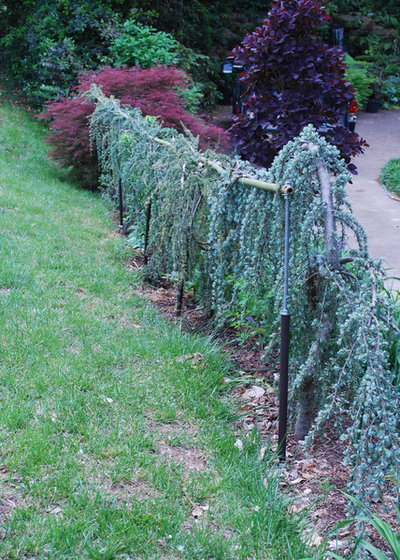
Jay Sifford Garden Design
Weeping forms of blue atlas cedar bring a unique sculptural quality and brilliant color wherever they are planted. They are equally at home in Asian gardens and contemporary ones. In my own garden, I created a living fence with five weeping specimens (
C. atlantica ‘Glauca Pendula’), as shown here. If you purchase weeping specimens while they’re young, you can remove them from their stakes and reconfigure them.
The blue, highly textural foliage of these trees is shown to best advantage when they’re planted with plants that have burgundy or chartreuse foliage. Japanese maple (
Acer palmatum), smokebush (
Cotinus spp) and ninebark (
Physocarpus opulifolius) make perfect garden companions, as do junipers, such as Golden Pacific.
Planting notes. Site blue atlas cedar where it will receive at least six hours of sun per day. Average, well-drained soil is best. Water consistently (1 inch of water per week) until the tree is well established.





